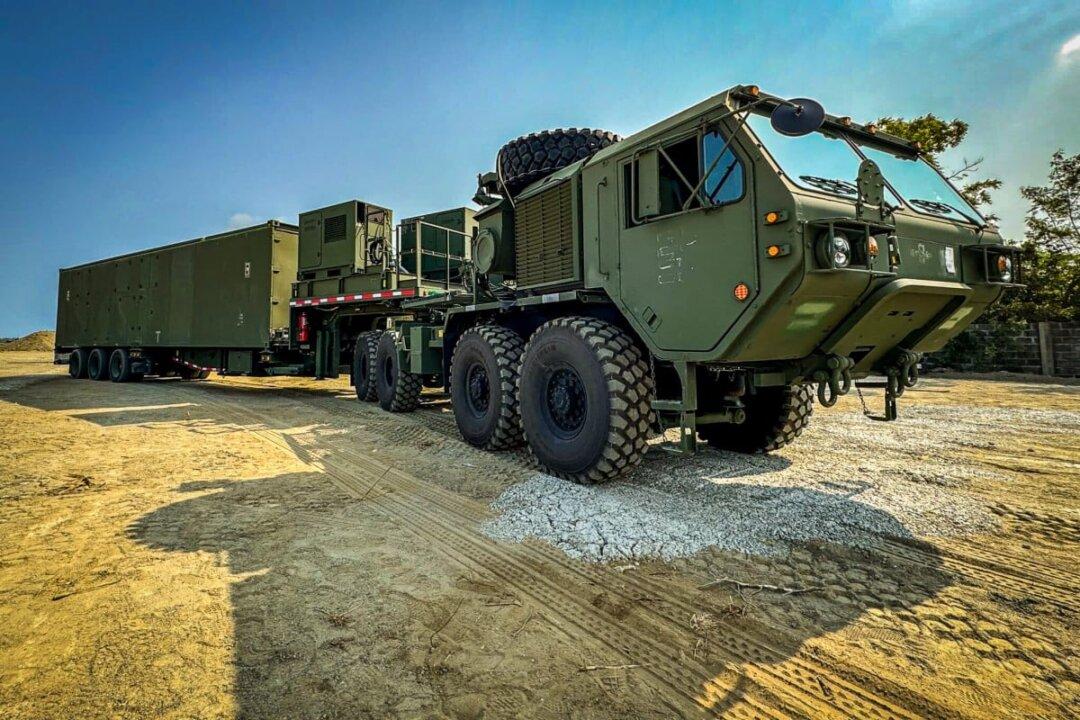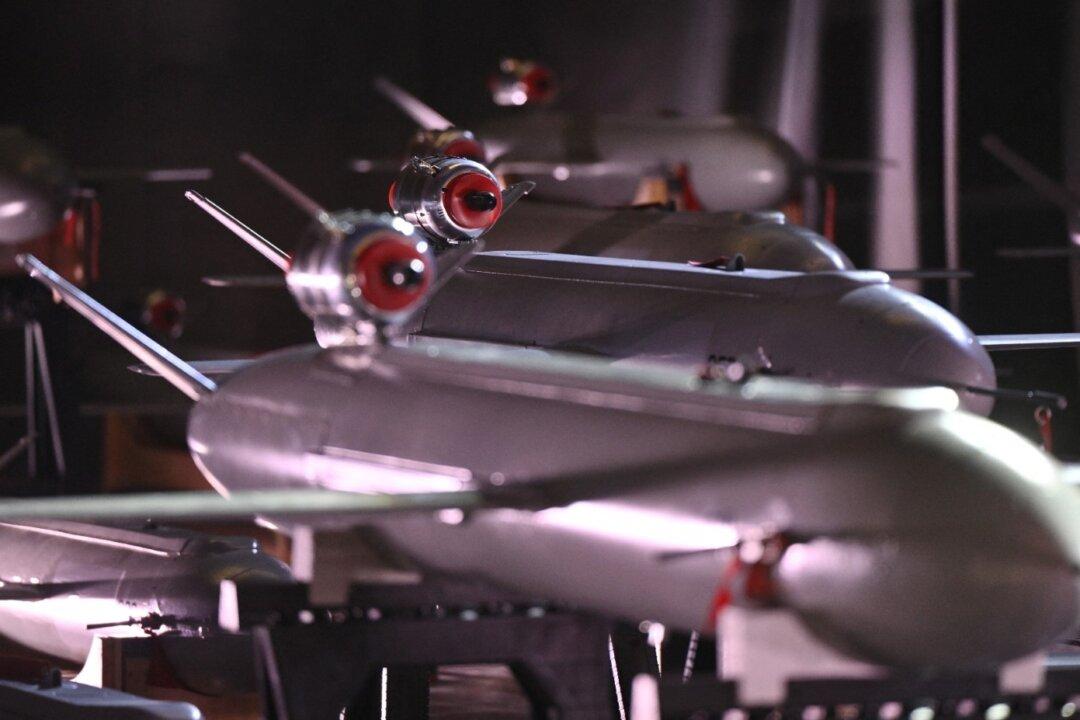The game-changing potential of U.S. missile technology recently came into the geo-political spotlight when it was revealed that the United States had supplied Ukraine with a much-coveted missile system: the Army’s Tactical Missile System (ATACMS).
However, while ATACMS—a mainstay on the battlefield in Afghanistan and Iraq—is currently garnering attention on the battlefield in Europe, its successor is poised to be a game-changer for future conflicts, especially in the Pacific.
That successor, known as Precision Strike Missile (PrSM), is a precision-guided missile, boasting an extended range and the capability to hit moving targets.
In a ground-breaking live-fire exercise, the U.S. Army launched two PrSMs from the island of Palau on June 16, successfully engaging and striking a moving target more than 40 nautical miles off the northern Pacific coast.
The target, the decommissioned USS Cleveland, an Austin-class amphibious transport dock ship, was part of a joint sinking exercise (SINKEX) that highlighted the missile’s debut on foreign soil, a significant advancement in the U.S. Army’s long-range capabilities.
The exercise not only demonstrated the lethal efficiency of the Precision Strike Missile but also showcased an integrated kill chain involving high-altitude balloons, electromagnetic spectrum sensors, advanced radio networks, long-endurance reconnaissance drones, and F/A-18C Hornet fighter jets from the U.S. Marine Corps.
This all-domain command and control network, vital for future Pacific theatres, reflects years of strategic development by the U.S. Army.
High-altitude balloons deployed several hundred miles from Palau provided critical maritime intelligence from 50,000 feet, employing electromagnetic sensors and mesh communication gear.
The balloons are part of a broader Army initiative to deploy stratospheric platforms that act as persistent sensors and communication relays.
The exercise integrated other cutting-edge surveillance technologies such as drone swarms and ultra-long-endurance unmanned aerial systems (UAS), which are essential for sustained intelligence, surveillance, and reconnaissance operations.
These systems ensure robust connectivity and seamless information flow, enabling dispersed joint forces to coordinate effectively and strike precisely.
Preparing for Pacific Conflicts
The main distinction between potential future conflicts in the Pacific and the current situation in Ukraine lies in the tactical approach: the former anticipates extensive use of precision-guided munitions for both land and naval engagements, replacing traditional artillery.This shift reflects a strategic adaptation to the geographical and tactical demands of the Pacific theater, particularly in scenarios like the Taiwan Strait, where the use of high-value, long-range weapons like the Precision Strike Missile, Standard-6, and Tomahawk cruise missiles could be crucial.
The employment of these advanced systems demonstrates the U.S. Army’s evolving strategy to project power across significant distances, potentially utilizing bases in the northern Philippines and parts of Japan to establish control over strategic areas such as the Taiwan Strait.
Evolution of Precision Strike Missiles
PrSM is a key program in that effort to extend ranges of precision strikes.
The U.S. Army recently began the operational deployment of PrSM. After receiving its first batch last year, the Army plans to achieve initial operational capability (IOC) later this year.This missile system, launched from both the M270 Multiple Launch Rocket System (MLRS) and the M142 High Mobility Artillery Rocket System (HIMARS), represents a significant upgrade over the existing ATACMS.
Notably, the Precision Strike Missile is smaller yet doubles the payload capacity, allowing each launch vehicle to carry two missiles. Currently, it boasts a range of at least 500 kilometers (310 miles), potentially extending to 650 kilometers (just over 400 miles) in future upgrades.
The initial version, known as Increment 1, incorporates a GPS-aided Inertial Navigation System (INS) for striking stationary targets like air defense systems, missile launchers, and command centers. The forthcoming Increment 2 version, or Land-Based Anti-Ship Missile (LBASM), introduces enhanced capabilities, including multi-type seeker systems that target moving maritime threats and improved tail control surfaces for better maneuverability.
The “Valiant Shield 24” exercise, which involved hitting a moving target at sea, suggests the deployment of either the Increment 2 version or an advanced prototype with similar capabilities.
Beyond Increment 2, the Army’s roadmap includes an Increment 4 version featuring a jet propulsion system to push its range past 1,000 kilometers (620 miles), and Increment 3, which may carry swarming loitering munitions.
The Army is also investigating other long-range weapons systems, such as a land-based launcher for the multi-purpose SM-6 missile and the Tomahawk cruise missile, which offers anti-ship capabilities and a range exceeding 1,500 kilometers (about 930 miles).
While not classified as hypersonic, ballistic missiles can reach hypersonic speeds in their terminal phase, traveling faster than Mach 5. This speed, coupled with advanced terminal guidance systems such as infrared or radar-guided seeker warheads, allows these missiles to effectively penetrate defenses and strike both stationary and moving targets with limited interception opportunities.
Autonomous Systems, Strategic Deployment
The U.S. military has yet to release live footage of the “Valiant Shield 24” joint sinking exercise, leaving some uncertainty about the movement of the target vessel, which may have been towed. Such live-fire exercises, especially against moving vessels, are relatively rare for the U.S. Navy.A key element of this exercise was the utilization of the Autonomous Multi-Domain Launcher (AML), an unmanned system derived from the HIMARS platform. Designed with the operational challenges of the Pacific theater in mind, the AML boasts significant autonomous capabilities, allowing for remote operation and deployment in strategically important yet minimally developed locations.
The system is capable of launching not only Precision Strike Missiles but also 227mm precision-guided rockets and Army Tactical Missiles, addressing a variety of ground and maritime threats. The AML’s design incorporates an array of sensors, including visible light, laser, radar, and GPS, enabling it to perform combat operations remotely by receiving target data and launch commands from manned artillery units or network command centers. Its unmanned nature allows for rapid redeployment and enhanced survivability, making it a critical asset in modern warfare.
The development and operational testing of the Increment 2 Precision Strike Missile, which can target moving maritime targets, marks a significant enhancement in the U.S. military’s capabilities. This is particularly relevant in the context of potential conflicts in the Pacific, such as between the United States and China, where anti-ship ballistic missiles (ASBMs) are of paramount importance.
The successful implementation of such missiles underscores the U.S. Army’s readiness for high-stakes maritime engagements and highlights its ability to significantly impact naval operations in the region.








